人教版(2019)必修第一册Unit 4 Natural disasters Video Time课件(共15张PPT,内镶嵌视频)
文档属性
| 名称 | 人教版(2019)必修第一册Unit 4 Natural disasters Video Time课件(共15张PPT,内镶嵌视频) |
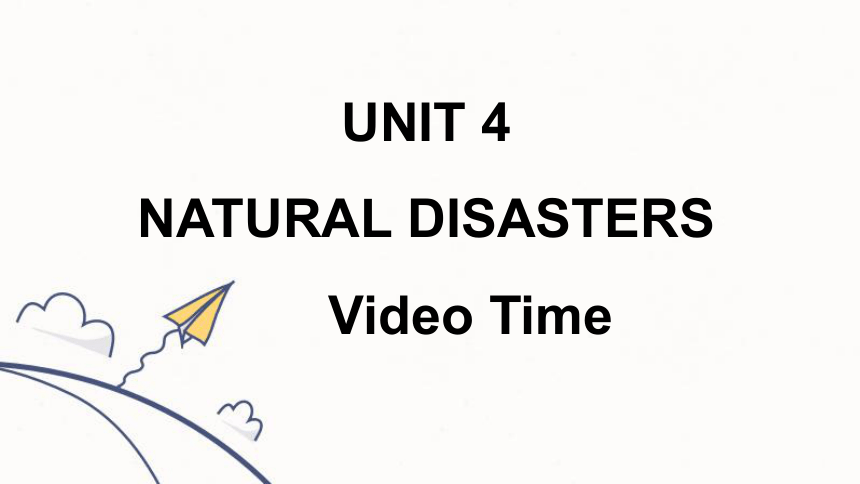
|
|
| 格式 | pptx | ||
| 文件大小 | 55.9MB | ||
| 资源类型 | 教案 | ||
| 版本资源 | 人教版(2019) | ||
| 科目 | 英语 | ||
| 更新时间 | 2024-10-11 17:09:24 | ||
图片预览

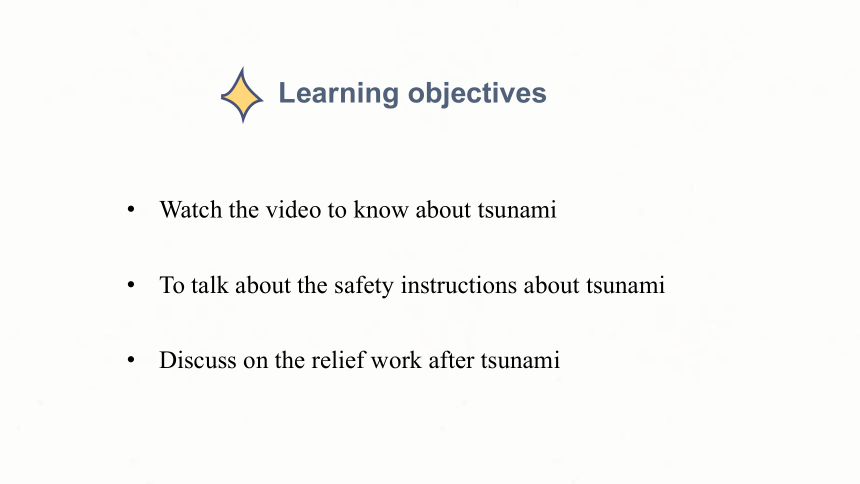
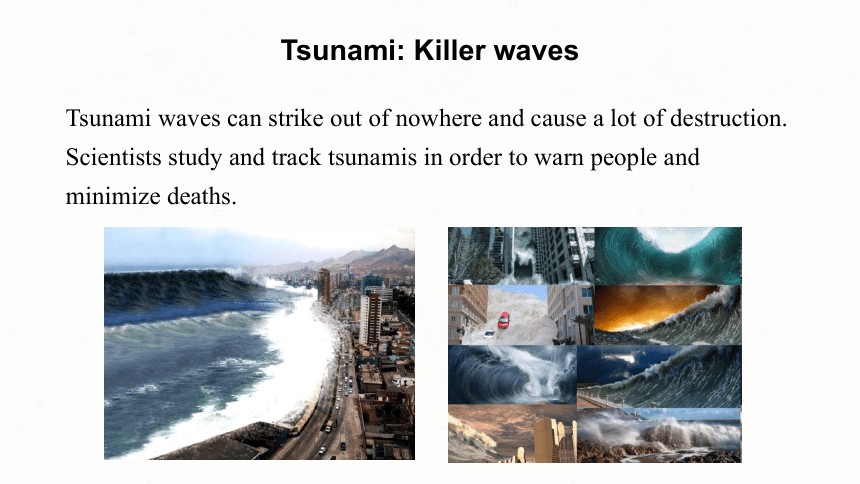
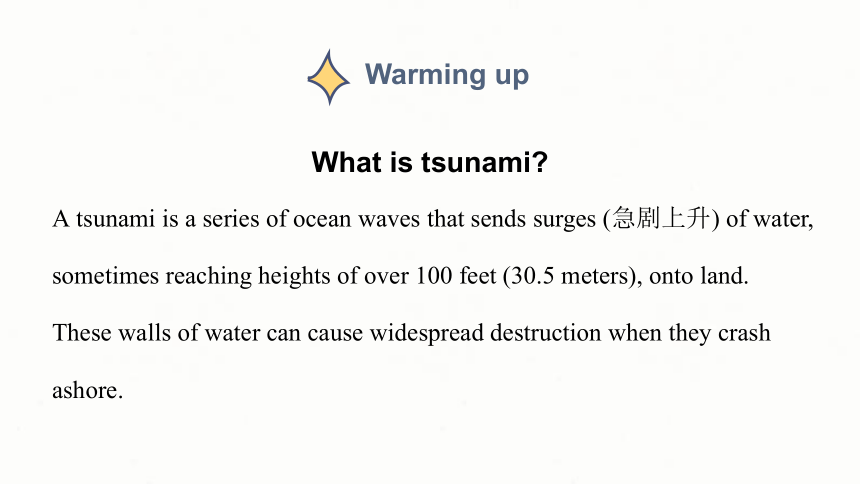
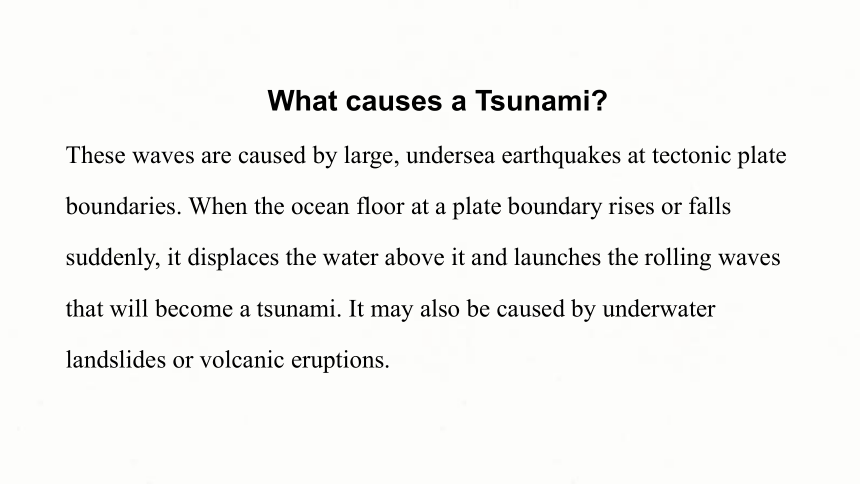
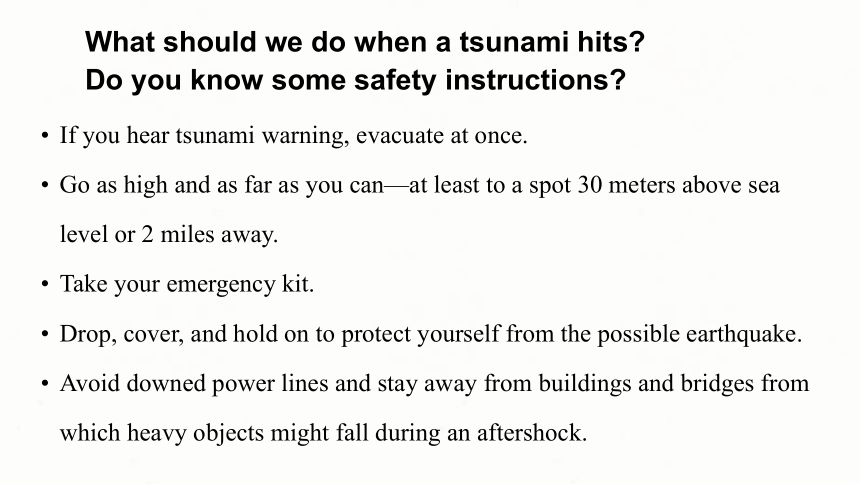

文档简介
(共15张PPT)
UNIT 4
NATURAL DISASTERS
Video Time
Watch the video to know about tsunami
To talk about the safety instructions about tsunami
Discuss on the relief work after tsunami
Learning objectives
Tsunami waves can strike out of nowhere and cause a lot of destruction. Scientists study and track tsunamis in order to warn people and minimize deaths.
Tsunami: Killer waves
What is tsunami
A tsunami is a series of ocean waves that sends surges (急剧上升) of water, sometimes reaching heights of over 100 feet (30.5 meters), onto land. These walls of water can cause widespread destruction when they crash ashore.
Warming up
What causes a Tsunami
These waves are caused by large, undersea earthquakes at tectonic plate boundaries. When the ocean floor at a plate boundary rises or falls suddenly, it displaces the water above it and launches the rolling waves that will become a tsunami. It may also be caused by underwater landslides or volcanic eruptions.
What should we do when a tsunami hits
Do you know some safety instructions
If you hear tsunami warning, evacuate at once.
Go as high and as far as you can—at least to a spot 30 meters above sea level or 2 miles away.
Take your emergency kit.
Drop, cover, and hold on to protect yourself from the possible earthquake.
Avoid downed power lines and stay away from buildings and bridges from which heavy objects might fall during an aftershock.
Read the sentences about the formation and effects of tsunamis. Then match each sentence with the correct picture.
Tectonic plates push together.
B. A series of waves expands in all directions.
C. Whole sections of cities are destroyed.
Decide whether the statements are true (T) or false (F).
1. There are few warning signs just before a tsunami hits.
2. A tsunami breaks just like an ordinary wave but is bigger.
3. Scientists at the Pacific Tsunami Warning Center monitor the earth’s movements 24 hours a day in order to track tsunamis.
1. There are few warning signs just before a tsunami hits.
2. A tsunami breaks just like an ordinary wave but is bigger.
3. Scientists at the Pacific Tsunami Warning Center monitor the earth’s movements 24 hours a day in order to track tsunamis.
T
F
T
A tsunami wave doesn’t break like an ordinary wave.
Circle the correct word(s) in each sentence.
1. An earthquake occurs when plates below the earth’s surface push together/pull apart.
2. Tsunami waves deep at sea move fast and rise only a few/ hundreds of feet.
3. As these killer waves enter shallow waters, their speed is reduced/raised.
4. Most tsunami damage is caused when the waves come in from/move back out to the sea.
What have you learnt about tsunamis
I’ve learnt that they are dangerous/ …that they aren’t noticeable or strong until they hit the coast./ …that they cause more damage when they recede.
What kind of help do you think people who have suffered from a tsunami need
They need food, water, shelter, etc. They may also need medical help and emotional help if they have lost loved ones.
Work in pairs. Discuss the questions.
Let’s watch another video about tsunami.
Write a passage in 70 words about how to help the people who have suffered from a tsunami.
Homework
UNIT 4
NATURAL DISASTERS
Video Time
Watch the video to know about tsunami
To talk about the safety instructions about tsunami
Discuss on the relief work after tsunami
Learning objectives
Tsunami waves can strike out of nowhere and cause a lot of destruction. Scientists study and track tsunamis in order to warn people and minimize deaths.
Tsunami: Killer waves
What is tsunami
A tsunami is a series of ocean waves that sends surges (急剧上升) of water, sometimes reaching heights of over 100 feet (30.5 meters), onto land. These walls of water can cause widespread destruction when they crash ashore.
Warming up
What causes a Tsunami
These waves are caused by large, undersea earthquakes at tectonic plate boundaries. When the ocean floor at a plate boundary rises or falls suddenly, it displaces the water above it and launches the rolling waves that will become a tsunami. It may also be caused by underwater landslides or volcanic eruptions.
What should we do when a tsunami hits
Do you know some safety instructions
If you hear tsunami warning, evacuate at once.
Go as high and as far as you can—at least to a spot 30 meters above sea level or 2 miles away.
Take your emergency kit.
Drop, cover, and hold on to protect yourself from the possible earthquake.
Avoid downed power lines and stay away from buildings and bridges from which heavy objects might fall during an aftershock.
Read the sentences about the formation and effects of tsunamis. Then match each sentence with the correct picture.
Tectonic plates push together.
B. A series of waves expands in all directions.
C. Whole sections of cities are destroyed.
Decide whether the statements are true (T) or false (F).
1. There are few warning signs just before a tsunami hits.
2. A tsunami breaks just like an ordinary wave but is bigger.
3. Scientists at the Pacific Tsunami Warning Center monitor the earth’s movements 24 hours a day in order to track tsunamis.
1. There are few warning signs just before a tsunami hits.
2. A tsunami breaks just like an ordinary wave but is bigger.
3. Scientists at the Pacific Tsunami Warning Center monitor the earth’s movements 24 hours a day in order to track tsunamis.
T
F
T
A tsunami wave doesn’t break like an ordinary wave.
Circle the correct word(s) in each sentence.
1. An earthquake occurs when plates below the earth’s surface push together/pull apart.
2. Tsunami waves deep at sea move fast and rise only a few/ hundreds of feet.
3. As these killer waves enter shallow waters, their speed is reduced/raised.
4. Most tsunami damage is caused when the waves come in from/move back out to the sea.
What have you learnt about tsunamis
I’ve learnt that they are dangerous/ …that they aren’t noticeable or strong until they hit the coast./ …that they cause more damage when they recede.
What kind of help do you think people who have suffered from a tsunami need
They need food, water, shelter, etc. They may also need medical help and emotional help if they have lost loved ones.
Work in pairs. Discuss the questions.
Let’s watch another video about tsunami.
Write a passage in 70 words about how to help the people who have suffered from a tsunami.
Homework
